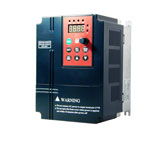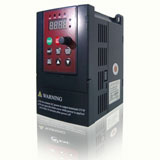4ma to 20ma or 0V to 10V analog signal
Analog control signal 4ma to 20ma is usually preferred over 0V to 10V due to its characteristics of fending off interference and knowing when there are faults in a control system, for example, a broken wire.
Typically what I have seen is that nearly all field instrumentation is 4-20mA. The only time we come across 0-10V signals really is interfacing to drive systems, older VFDs or specialist sensors. Newer VFDs mostly now have a 4-20mA option or we interface with comms.
One of the main advantages of 4-20 mA is that you can run 2-wires to the sensor, which saves much cost in long runs, but does have drawbacks. The biggest is the "loading" that Pamela mentions. The sensor "steals" 10V typ to operate its electronics. If your receiving end uses a 250 ohm resistor (typ), that is another 5V, so your power supply must output 15 V plus wiring drops. Not usually a problem with the typical 24 V power supply, but it can bite you. 3-wire systems allow more margin since the signal isn't in series.
Other drawbacks to 4-20 mA are increased sensor complexity, slower response, and less accuracy, particularly if you don't control the 250 ohm sensing resistor. For example, many 5B modules use an external plug-in resistor which can be degraded by pin corrosion. Analog Devices has good explanations of current loops in their data sheets for 4-20 mA chips.
In general, voltage signals are more common in short runs (automation) and scientific applications. Noise pickup is usually not a problem. Propulsion test sites typically run raw thermocouple (TC) signals (0-20 mV) and strain bridge signals (+/-30 mV load cells & pressure xducers) hundreds of feet from outdoor test stands. Noise is typically only 4 A/D bits (2 uVrms) in a 1000 Hz bandwidth. This is with shielded, straight-wire cables. In a prior job, we ran strain gages and potentiometers around 480V AC motors and noise was rarely a problem. I suspect because these are low-impedance sources. A TC is basically a short circuit, so a noise source would need a lot of power to assert itself on the wire. If your sensor has built-in amplifiers, as typical in process industries, the +/-10 V output is a powerful current source (low-impedance) and usually doesn't even require shielded cable. Problems are more commonly due to not understanding analog references and ground loops.
Typically what I have seen is that nearly all field instrumentation is 4-20mA. The only time we come across 0-10V signals really is interfacing to drive systems, older VFDs or specialist sensors. Newer VFDs mostly now have a 4-20mA option or we interface with comms.
One of the main advantages of 4-20 mA is that you can run 2-wires to the sensor, which saves much cost in long runs, but does have drawbacks. The biggest is the "loading" that Pamela mentions. The sensor "steals" 10V typ to operate its electronics. If your receiving end uses a 250 ohm resistor (typ), that is another 5V, so your power supply must output 15 V plus wiring drops. Not usually a problem with the typical 24 V power supply, but it can bite you. 3-wire systems allow more margin since the signal isn't in series.
Other drawbacks to 4-20 mA are increased sensor complexity, slower response, and less accuracy, particularly if you don't control the 250 ohm sensing resistor. For example, many 5B modules use an external plug-in resistor which can be degraded by pin corrosion. Analog Devices has good explanations of current loops in their data sheets for 4-20 mA chips.
In general, voltage signals are more common in short runs (automation) and scientific applications. Noise pickup is usually not a problem. Propulsion test sites typically run raw thermocouple (TC) signals (0-20 mV) and strain bridge signals (+/-30 mV load cells & pressure xducers) hundreds of feet from outdoor test stands. Noise is typically only 4 A/D bits (2 uVrms) in a 1000 Hz bandwidth. This is with shielded, straight-wire cables. In a prior job, we ran strain gages and potentiometers around 480V AC motors and noise was rarely a problem. I suspect because these are low-impedance sources. A TC is basically a short circuit, so a noise source would need a lot of power to assert itself on the wire. If your sensor has built-in amplifiers, as typical in process industries, the +/-10 V output is a powerful current source (low-impedance) and usually doesn't even require shielded cable. Problems are more commonly due to not understanding analog references and ground loops.



